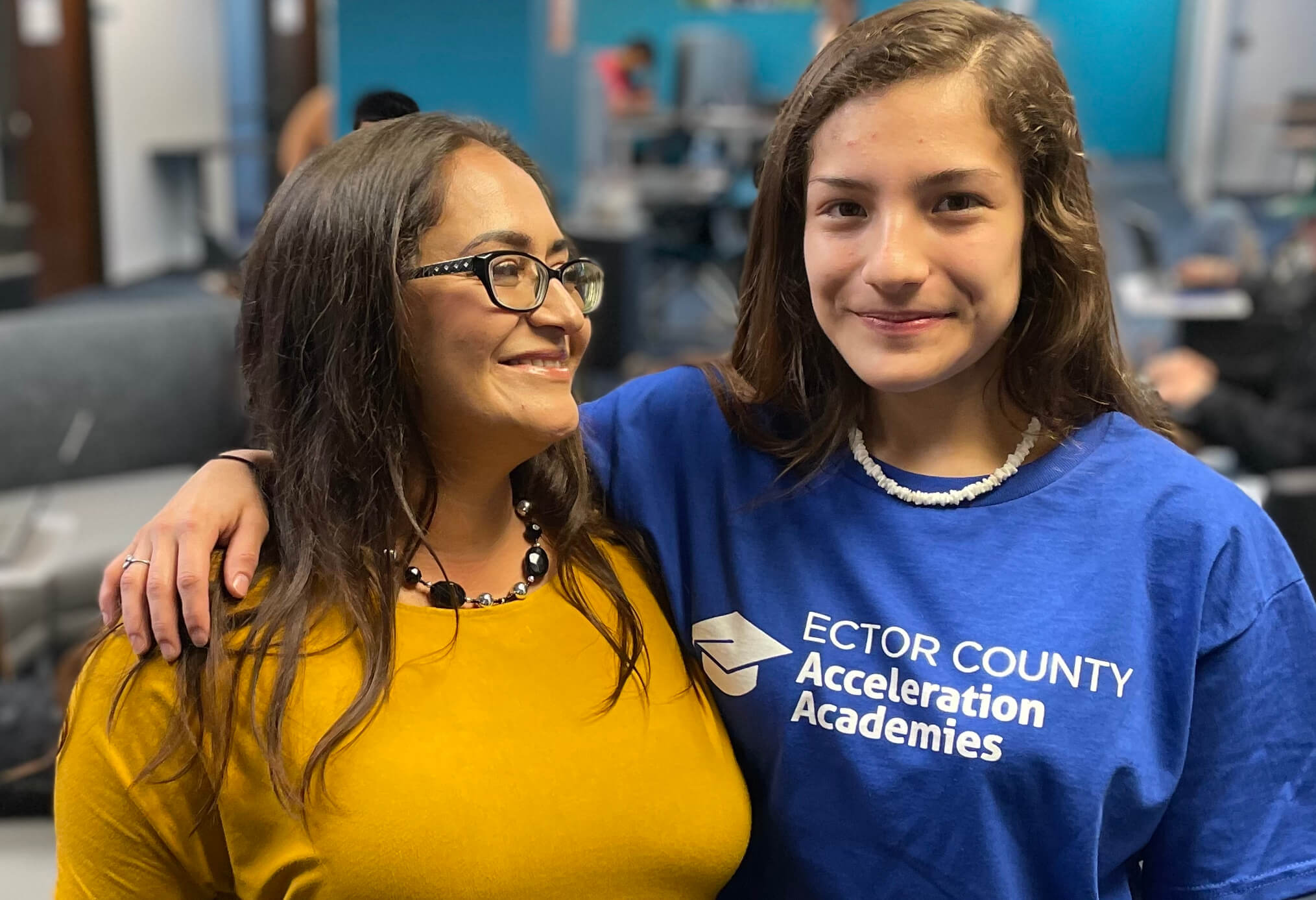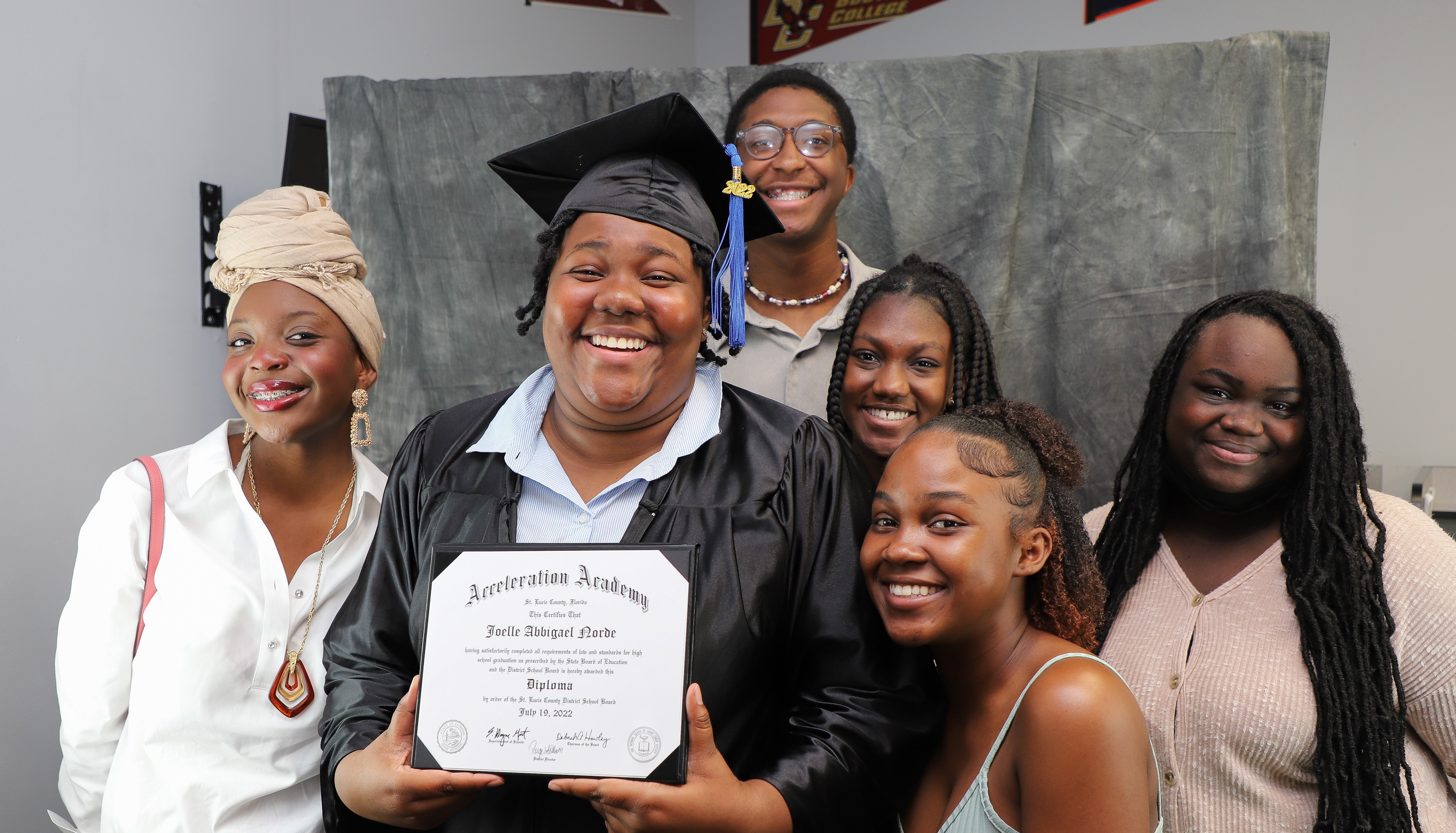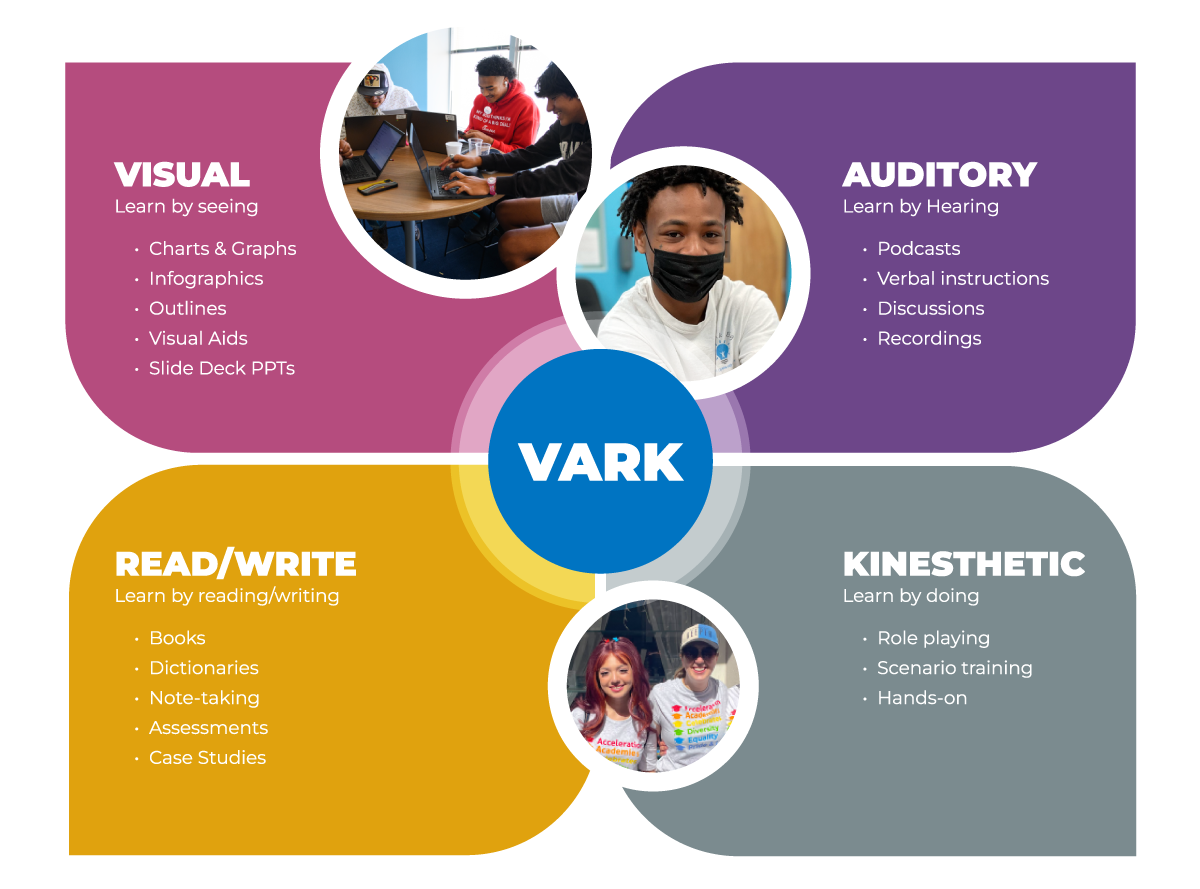COST
How much will you spend?
If you or your student has ever struggled with traditional high school and its diploma requirements, you’ve probably wondered what it would look like to take the GED®. The GED is another way for you to finish high school and offers many different benefits – especially if you're considering dropping out.
While the GED has helped many students finish high school, it’s not exactly the same experience as graduating with a high school diploma.
We know why a high school diploma is important, but the answer to how to finish high school can look different for everyone depending on a student’s unique schedule, needs and circumstances.
So, let’s compare a GED vs. a high school diploma.

While the GED has helped many students finish high school, it’s not exactly the same experience as graduating with a high school diploma.
We can all agree that it’s important to finish high school. But how we finish high school can look different for everyone depending on a student’s unique schedule, needs and circumstances.
So, let’s compare the GED vs. the high school diploma.
Let’s start by defining the GED. The GED, or general education development, is a series of tests that cover four subjects – language arts, mathematics, science and social studies. It’s also known as a high school equivalency because it was designed to test students on the topics learned in a traditional high school setting.
A GED and a traditional high school diploma are two different paths to finishing school. We’ve broken down the major differences between these options: accessibility and overall experience.
False: While the GED and diploma both accomplish the goal of finishing a high school-level education, each path provides a unique experience that may or may not fit your needs.
|
A flexible learning & scheduling format that includes online and in-person support from local facilities where you can take 1 course at a time. |
Well, it depends on who you ask and what you consider “easy.” The GED and high school diploma offer two very different experiences, so the challenge and fit with your lifestyle will differ depending on your unique situation and learning preferences.
Let’s compare what this looks like in a few different ways.
One major difference between a GED a high school diploma is the cost.
GED classes can cost hundreds of dollars in study guides and tutors. The GED test also has a fee associated with it. Understandably, the total costs of GED programs can be limiting if you’re struggling financially.
However, earning a high school diploma is free through the public school system. You’ll have to bring your own backpack and personal materials, but you won’t have to pay for study guides and specific tests.
As an alternative education program, Acceleration Academies partners with school districts to offer free education to high school students. Our flexible format includes all the instruction you need to earn a high school diploma, on a personalized plan, at no cost.
Connect with us today!
.webp)
Do you have a preference for remote learning or in-person classes? Or do you excel with a combination of both? Another big difference between the GED and high school diploma is the format.
You can choose a GED program that is entirely remote or a program that includes classes at set times. These additional classes can help prepare you for the GED examination but note that these preparatory classes are often optional. In the case of remote GED courses, many students will rely on self-guided study resources or find online tutors available for GED coursework.
Traditional high schools typically meet every weekday for set times dedicated to various courses. You’ll receive a schedule at the beginning of each term and be expected to regularly attend classes for those timeframes. A typical day will include a bell schedule with various morning classes, lunch in the cafeteria and afternoon classes before dismissal. A schedule like this can be limiting if you have unique needs and responsibilities outside of school.
At Acceleration Academies, we combine the flexibility of an online curriculum with the support of in-person instruction. Our hybrid format gives you time 1 on 1 time with our content coaches and the space to complete your work online when it works best for you. Acceleration Academies provides spacious, well-staffed academies for our students. That way, there’s always a content coach there to help you with your studies, plus opportunities to work with other students in groups, so you won’t miss out on valuable relationships.
Because it is primarily self-guided, GED programs tend to have less hands-on assistance. The program moves at your pace, and class meetings are often optional (if you invest in preparatory programs).
Public high schools have more community and collaboration built into their systems simply by having you attend regular classes. With the presence of teachers and teacher’s aides, you can receive more support and guidance directly in the classroom.
However, flexible education and alternative education programs provide even more assistance for you. These programs are usually more community-focused, and they can offer more support if you learn best in smaller groups with more time for going over material and getting help with coursework. Alternative education programs typically have smaller student groups, which can also help with that anxiety about asking for more help in class.
Acceleration Academies provides in-person support from teachers and tight-knit communities of students, so everyone gets the help they need with supportive peers around them. Plus, Acceleration Academies structures its curriculum after you as an individual student, so you can focus on one course at a time and master it before moving on to another subject.
Support with technology can also become a barrier for students. With a GED program, you often have to provide your technology if libraries or other public options are unavailable. Students enrolled in a traditional high school format will have access to the school’s technology. At Acceleration Academies, we also provide the flexibility of technology you’ll need and give each student a laptop to use in the academy and take home to complete classes and learn from our curriculum.
Check out our blog: Signs Your Child Could Be Happier in Another School Setting!

GED programs can be completed by people at any age, even if they’re older than the typical high school student. This helps people finish their education and access more opportunities later in life than without certification.
However, traditional high school diplomas can only be earned if you’re within a certain age range, usually set by the state or the school district. While this means there’s a limited time frame for earning a high school diploma, there are more ways to graduate high school through alternative learning experiences than ever before.
At most Acceleration Academies locations, you can enroll if you’re under 21 and have been promoted to 9th grade. With our unique program, you can choose to complete your coursework at a more accelerated pace or go through each subject with more time to feel you’ve fully grasped the material.

See if you’re eligible to enroll with Acceleration Academies.
People often have questions about what sorts of doors getting a GED or a diploma can open in the future. We’ve already unpacked some accessibility questions while you’re earning your education, but what about afterward? Here are some of the things to expect in your life after high school:

By earning a high school diploma or GED, you’re already qualified for many different jobs. However, your job options may vary depending on whether you have a high school diploma or a GED. With a high school diploma, you’re more eligible for 90% of available jobs; with a GED, you may face certain stigmas during your job search.
It’s important to note that you may see earning differences between a GED and a high school diploma, as well. According to the US Census Bureau and the Bureau of Labor Statistics, high school graduates earn approximately $1,600 more monthly than those who obtained a GED. During their lifetime, high school graduates can also expect to earn at least $500,000 more compared to those with a GED.
Acceleration Academies grants you a district-issued high school diploma upon completing all necessary coursework and required attendance, opening up the same doors as diplomas from traditional high schools.

You can go to college with a GED or with a diploma. Most schools recognize both within the US as a sign of your sufficiency in education and your ability to apply to a college program. However, some colleges may require you to submit extra references and test scores to ensure your acceptance to their programs if you’re only applying with a GED.
Putting in the time to earn a diploma or a GED will pay off, even if you decide not to go to college and want to join the workforce or the military right out of high school.
False: While having a GED isn’t a bad option, there are some clear benefits to earning a high school diploma.
Trying to decide between a GED and a diploma (whether through a traditional public high school or an alternative education program like Acceleration Academies) can be difficult. Still, you must consider what’s best for you and your situation. The important thing to remember when making this choice is that there are many options to help you succeed!
Here are 3 questions to ask yourself when making this decision:
1. How Much Time Do I Have?
If you’re nearing the cut-off age of high schoolers for your state, you’ll need to meet with a guidance counselor or a trusted teacher soon to get back on track. Or, now might be the time to consider pursuing a GED program or a program like Acceleration Academies.
Acceleration Academies helps you build a schedule that fulfills our attendance requirements and provides the help you need to complete your coursework, all on a timeline that works for your needs. Our flexible format means you can complete a single class in 3-4 weeks, which is a huge help if you’re on a time crunch to graduate.
If you aren’t nearing the cut-off age, you should still look at the time you have left in high school:
Take some time to consider if the connections you’re making now are ones you want to continue growing within a high school setting or if you’re ready to branch out!
2. What's My Learning Style?
Everyone has a different learning style, which is what makes education so unique! Think through times in your schooling when you felt supported by your teachers and other students. Consider the times, too, when you’ve felt lost or unproductive.
You can start to identify your learning style with the VARK model.

Most people prefer some combination of these four styles. You can dig deeper into your learning style by assessing the situation, too — the environment and those around you when you’ve had success learning.
Determining your learning style will benefit your life outside of the classroom, as well. By identifying what you need to feel supported, inspired, and productive, you’ll be more likely to find an environment where you can thrive later on — in your career and beyond.
In addition to the different learning styles, some students need extra academic support from their teachers. If you have a learning disability that makes succeeding in a traditional high school setting difficult, Acceleration Academies has dedicated special education teachers to help you. We’re committed to helping students with IEPs and 504 plans succeed in their academic studies and lives outside school. Whether you have dyslexia, anxiety, or any other challenge in learning, Acceleration Academies has coaches ready to help you learn and grow.
Switching to a program like Acceleration Academies can benefit you if you want to achieve your goal of graduating with a high school diploma but need more freedom to learn in the style that works best for you. With this alternative education program, you can still get your diploma on your timeline, with more individualized support from our on-site teachers.
3. What's My Schedule Like?
You might get your first job in high school. Or, you may have been working for a while in order to support your family. You may be experiencing some stress with trying to juggle your job and academics.
Finding a program that gives you the flexibility you need to finish school is essential. In most cases, this flexibility can only be found in an alternative education system, such as a GED program or a program like Acceleration Academies. These programs work with you to help you succeed in school on your schedule.
We’ve discussed some reasons you should pursue a high school diploma or a GED, but there are many other alternative routes to finishing high school.
The term “alternative education” refers to any form of high school education outside of the traditional setting. This includes homeschooling, charter schools, micro-schools and more. Since 2020, alternative education has been on the rise because of its emphasis on flexible education.
-1.png)
Acceleration Academies is another way to graduate high school. Check out some of what real students at Acceleration Academies locations around the US are saying:
“They don’t let us give up. They tell you every day you’re going to graduate. And if you don’t go to school, they’re blowing up your phones.”
“It’s like having a desk in your living room. It’s just like being at home.”
“Instead of being stuck in these cinder block classrooms with 30 other students where it’s loud and chaotic, I can sit back there and just chill. It’s a very open and accepting environment.”
“We’re all going through something, so we can all relate to one another. So we have a mutual agreement of respect. It just makes me feel good.”
Acceleration Academies allows students to earn a high school diploma in a flexible, no-cost format. You could say it’s the best of both worlds when it comes to the GED vs. high school diploma decision.
At our academies, we make class work for you, so you won’t feel like just another student. Schedules are built with your unique circumstances in mind – plus, students always have coaches available to help. Our spacious academies inspire collaborative learning, so students can make lasting connections as they finish school.